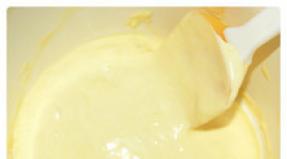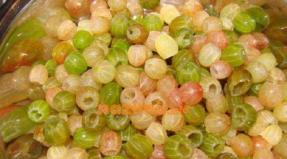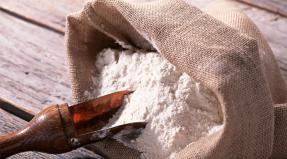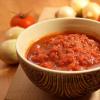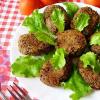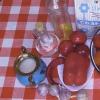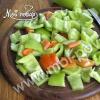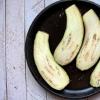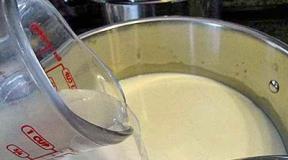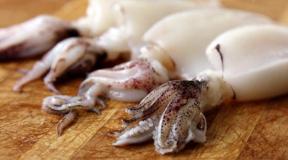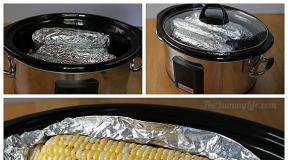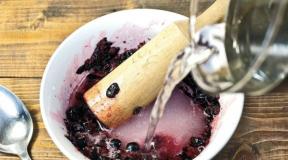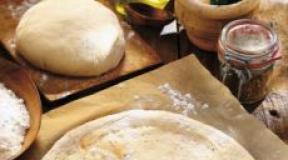E150a Sugar color I simple. Technology for the preparation of caramel coloring for cognac, alcohol or moonshine Sugar color harm
Cognac of French production is a product with a deep color, pleasant aroma and exquisite taste bouquet. If you want to make a drink at home that will not differ in any way from an expensive brand product, use caramel for moonshine. This is a natural dye prepared on the basis of sugar - color. Most French recipes involve the use of this ingredient to give the drink a beautiful shade.
Natural dye - properties and features
Sugar-based moonshine color is a safe food product that allows you to change the color of the drink.
Caramel color is acid resistant and does not change color under the influence of ultraviolet radiation. The taste of burnt sugar is felt only in two cases.
- At high concentration
- In low alcohol drinks
It is important! The use of sugar dye extends not only to cognac or whiskey. With its help, moonshine, various tinctures are stained.
Basic cooking rules
Caramelization of sugar for cognac, moonshine is the process of melting sugar crystals to a homogeneous consistency.
- Dishes must be absolutely clean.
- The spatula must be wooden or silicone
- Do not use Teflon-coated cookware as the crystals will scratch the surface.
- The main condition is to be careful, because burnt sugar is cooked at a temperature of 190 degrees. When adding liquid, foam is formed, which can splash out at any time. To avoid burns, the liquid is heated in advance and poured into sugar gradually, in a thin stream, along the edges of the dishes.
wet method
This technique is simpler - sugar dissolves in a small amount of water, this eliminates the possibility of burning, the prepared mixture is easier to mix with moonshine.
Required Ingredients:
- Sugar - 100 g.
- Water - 130 ml.
- Vodka or alcohol - 100 ml.
- Citric acid - a few grains
Citric acid is used to give the color a more uniform consistency.
Cooking technology
- First of all, the same amount of sugar and water is mixed in a saucepan - 100 g and 100 ml
- The mixture is put on medium heat and heated, stirring constantly.
- When foam appears, reduce the fire to a minimum and continue to cook, stirring
- After the water evaporates, caramel is formed, the sugar becomes brown. Throughout the cooking process, it is important to monitor the temperature regime, since sugar is easy to burn. The optimum temperature is +190 degrees. If the coloring is cooked at a higher temperature, after being added to the drink, it will become cloudy or too dark.
- The container is removed from the heat when the liquid acquires an amber shade of tea. On average, it takes 12-15 minutes from the moment the water evaporates
- The mixture is cooled to room temperature, during which time the sugar hardens, a few crystals of citric acid and alcohol are added to it.
- The components are mixed until the alcohol dissolves the contents. If the dye does not dissolve, it is slightly heated, being careful, because there is alcohol in the composition, it can catch fire
- Caramel crumbs will remain at the bottom of the prepared syrup, this is a natural process. 30 ml of water is added to the resulting liquid, this will reduce the strength
- When the caramel stops dissolving, the dye is poured into a bowl for further storage.
The finished product is a concentrated sugar-based dye, the color of strong tea, with a caramel flavor.
It is important! Kohler, prepared on the basis of dark caramel at a temperature of +190 degrees, loses its taste, so it will not work to sweeten the drink with it.
The finished dye is stored in the refrigerator or at room temperature. Since microorganisms are not able to process burnt caramel, the color does not deteriorate.
dry method
Cookware with a wide, thick bottom and high walls is required. Heat the dishes and gradually add sugar and stir constantly. After 10 minutes, a brown foam appears, it increases in volume, so a tall saucepan with a volume of at least 3 liters is required. The fire is reduced to a minimum, after a few minutes the foam subsides. A coffee-colored liquid is formed, it is poured into a metal container and, after cooling, stored in a freezer.
It is important! You do not need to heat the sugar to a temperature above +200 degrees, as the sugar may burn.
How to add color to a drink
Caramelization of moonshine is an individual process, the amount of dye added is determined by personal taste preferences and the desired shade of the drink. To get a product that resembles cognac in color, 2-3 drops per 1 liter are enough. Kohler is added to the drink, mixed, wait 5 minutes and, if necessary, repeat the process. It is not recommended to add more than 3 ml, in this case the drink will become too saturated in color, the taste changes.
Now you know how to make natural dye for moonshine at home. Perhaps the first attempt will be unsuccessful, because experience and practice are important in this process. If the ultimate goal is to sweeten moonshine, a light-colored caramel is prepared, it has more sweetness.
Sugar color, or additive E150, is a food coloring that dissolves in water. In everyday life, it is known as burnt sugar and is used in the manufacture of confectionery. It has a taste of caramel, slightly bitter, and the smell of burnt sugar. The color of the color can be from light yellow to brown.
Color has been used for a long time. This is one of the most ancient dyes. The additive is found in almost every type of industrial product: chocolate, sweets, brown bread, alcohol, dough, and many others.
Why is a supplement needed?
The main function of natural dye sugar color is to color products. But the E150 additive has another purpose. It is added to soft drinks as an emulsifier - it prevents the formation of flakes and turbidity of the product. Light-protective substances do not allow the components of the drink to oxidize.
Dye called "sugar color" is divided into 4 classes.
The classification is based on the methods of obtaining and the properties of the additive:
- Additive E150a (I). This is a simple caramel, which is obtained by thermal processing of carbohydrates. In this case, third-party substances are not used;
- Additive E150b (II). It is made thanks to alkaline-sulfite technology;
- Additive E150c (III). This caramel is obtained using ammonia technology;
- Additive E150d (IV). It can be made using ammonia-sulfite technology.
The preparation of sugar color E150 is called "caramelization". During processing, alkalis, salts and acids are present. The main component in the manufacture is fructose, dextrose, sucrose, molasses, starch - all sweeteners are inexpensive and affordable.
Sulfuric, phosphoric, acetic, citric, sulfuric acids can be used as acids. Sodium, ammonium, calcium, potassium act as an alkali.
Depending on which reagents are used, the charge of the dye can be negative or positive. In order not to form a precipitate, it is important to choose the right class of dye. To do this, take into account the physico-chemical characteristics of the product.
Features of use
Natural dye has microbiological stability - it is produced at high temperatures, and the density does not allow microorganisms to develop.
Glucose is obtained from wheat, malt syrup from barley, and lactose from milk. This explains why color can cause allergic reactions. All people who have a reaction to these substances should be wary of the supplement - sugar color can harm them.
If the sulfite method is used, the final product may contain sulfites or traces thereof. However, this figure is very small, and rarely causes allergies. Therefore, its presence is not always indicated on the packaging.
JECFA has established that 160-220 mg/kg body weight can be consumed per day, depending on which class the supplement belongs to. E150a is considered safe for the body, so its daily dose is not regulated.
Is there color in cognac?
Ordinary cognac is obtained from alcohol, which is aged for 2-3 years. In order for this drink to be called vintage, the exposure must be at least 5 years. There is a special technology, alcohols are blended. But the composition of cognac includes not only alcohols.
The label should indicate that the drink contains water, sugar color and syrup. Sugar color is present in cognac in order to give it an intense color. It is added by almost all manufacturers.
If the drink is prepared without this additive, it is easy to "declassify". Cognac will have a light, yellowish tint, unsaturated and shallow. As a rule, this scares off the buyer, so such drinks are rare.
Color production technology is very complex, problematic preparation requires certain experience and includes such basic steps:
- cooking;
- Fortification;
- Aged in oak barrels.
The additive gives a rich color, but does not affect the taste and aroma. In addition, in brandy it is in small quantities.
Kohler is widely used in the food industry to give a marketable appearance to unattractive and unappetizing products.
Even after a long aging in barrels, cognac (whiskey) may remain light yellow, this is normal. To change the color, a natural dye made from burnt sugar is used - tint. The production of most French cognacs provides for its addition. Properly made caramel coloring does not affect the taste of the drink and does not cause haze. In turn, the technology for making sugar color is simple and easy to reproduce at home.
Caramel color is a natural food coloring that is resistant to changes in acidity and fading in the sun, which is added to drinks to change color. The taste and / or smell of caramel is felt only at very high concentrations or in low-alcohol drinks, such as beer.
Sugar color can be used not only in homemade cognacs or whiskey, it can be used to paint over moonshine, alcohol or tinctures without changing other properties (taste and smell).
sugar color recipe
Ingredients:
- sugar - 100 grams;
- bottled water - 130 ml;
- vodka (distillate, alcohol 40) - 100 ml;
- citric acid - 5-6 grains.
Citric acid makes the consistency of caramel more homogeneous, so it is advisable to add a couple of crystals.
Cooking technology
1. Mix sugar and water in equal proportions (100 ml and 100 grams) in a saucepan.
2. Put on fire, bring to a boil.
3. As soon as foam appears and the bubbles become viscous, reduce the fire to the very minimum. After the water evaporates, the sugar will begin to darken, a caramel shade will appear. You need to constantly monitor the process so as not to burn the sugar.
The correct temperature for making caramel color is 190-200°C. If it is higher, then when the dye is added, the alcoholic drink will become cloudy or darken very much.
4. When the color of well-brewed, but not strong tea appears, remove the pan from the stove. It takes about 15 minutes from the moment the water evaporates to the desired color.

 Time to take it off the stove
Time to take it off the stove 5. Cool to room temperature. Sugar should become hard.
6. Add citric acid and alcohol to the thickened caramel. It is advisable to dissolve the color in the same drink that is planned to be tinted.
7. Stir with a spoon until the alcohol base has dissolved almost all of the caramel. The process is long.
If the caramel does not dissolve, it can be put on fire for a couple of minutes and softened slightly. Remember that you are heating a liquid with a strength of 40%, do everything carefully!
8. Add 30 ml of water to the resulting syrup (there will be caramel residues at the bottom, this is normal) to reduce the strength of the color to 20-25 degrees.
Water is added right now, because according to the technology, burnt sugar must be dissolved in a liquid with a strength of 40-45 degrees.
9. When the color stops dissolving the caramel remaining at the bottom, pour the finished color into a storage container (preferably glass). Crush the rest of the burnt sugar and throw it into a container with color (optional).


It turns out a sugar dye (concentrate) of a rich black color with a slight aroma of caramel.
You can store hermetically sealed color both in the refrigerator and at room temperature. Not a single microorganism processes caramelization products, so the sugar dye practically does not deteriorate.

There are no clear proportions for adding color to distillates and alcohol, the amount depends on the desired color. I advise you to use the dye a couple of drops per liter of drink, mix, wait 3-5 minutes, and then tint again if you wish.
The full technology is shown in the video.
Additive E150 (Sugar color), better known in everyday life as caramel or burnt sugar, is a water-soluble food coloring. The E150 dye is a more oxidized caramel than that used in sweets and confectionery. Additive E150 has a smell of burnt sugar and a slightly bitter taste. The color of the E150 dye varies from light yellow and amber to dark brown.
Although the main function of caramel coloring is food coloring, the E150 additive also has a number of additional functions. In soft drinks, the E150 color acts as an emulsifier to prevent the drink from clouding and flaking. This is facilitated by the light-protective properties of the additive, which prevent the oxidation of the flavor components of drinks.
The Joint FAO/WHO Expert Panel on Food Additives (JECFA) divides caramel color into 4 classes, depending on the method of preparation and physical properties. You can get a detailed description, as well as the features of obtaining and using each class of caramel coloring, at the links below.
Thus, today the following types of E150 dye are used in the food industry:
- sugar color I (additive E150a) - simple caramel obtained by heat treatment of carbohydrates without the use of third-party substances;
- sugar color II (additive E150b) - caramel obtained by alkaline sulfite technology;
- sugar color III (additive E150c) - caramel color obtained by ammonia technology;
- sugar color IV (additive E150d) - caramel obtained by ammonia-sulfite technology.
The E150 additive is obtained by thermal treatment of carbohydrates, mainly in the presence of acids, alkalis or salts. The process of obtaining the E150 dye is called caramelization. At the same time, caramel is made from inexpensive and affordable nutritious sweeteners. As the main component in the production of dye E150, fructose, dextrose (glucose), invert sugar, sucrose, malt syrup, molasses, starch are used. In the role of acids that can be used in the production of caramel color, sulfuric, sulphurous, phosphoric, acetic and citric acids are used. In the alkaline method of obtaining the E150 additive, ammonium, sodium, potassium and calcium alkalis are used. In addition, when obtaining a caramel color, hydroxides and salts of ammonium, sodium and potassium (carbonates, bicarbonates, phosphates, sulfates, bisulfites) can also be used.
Caramel color molecules can have a positive or negative residual charge, depending on the reagents used in its production. Therefore, in order to avoid problems such as sediment or turbidity of food products, it is necessary to correctly select the class of caramel color, depending on the acidity and other physical and chemical characteristics of the food.
Sugar color has a high microbiological stability. Since the E150 dye is produced at very high temperatures and has a high substance density, it does not support the development of microorganisms.
Effect on the body
Harm
Caramel color E150 can cause allergic reactions in a small part of consumers. However, this is primarily due to the products from which this food supplement is obtained. Wheat-derived glucose, barley-derived malt syrup, and milk-derived lactose can themselves be allergens. Thus, people who are allergic to these types of products should also avoid foods using Sugar Color.
In the production of additive E150 by the sulfite method, the final product may contain traces of sulfites. However, this figure is less than 10 parts per million, so product packaging does not necessarily contain warnings about a possible allergic reaction to dye components.
The international organization JECFA has set the acceptable daily intake (ADI) for E150 food coloring at a level of 160 to 200 mg/kg of body weight, depending on the coloring class. For food additive E150a (sugar color of class I), the allowable daily allowance is not regulated due to its safety for the body.
In 2010, the international chemical safety organization IPCS concluded that commercially produced caramel color had the same toxicological properties as caramel made from sugar at home. The only exceptions are dyes, in the preparation of which ammonium is used (additives E150c and E150d). The IPCS organization has also confirmed in its research that sugar color is not a carcinogen or a mutagen.
The US Food and Drug Administration (FDA) classifies the E150 supplement as safe and exempts from mandatory certification.
Benefit
Despite the relative "harmlessness" of caramel coloring, data on any positive effect of the E150 supplement on the human body has not yet been received.
Usage
Sugar color is one of the oldest and most widely used food colorings. The E150 additive is found in almost every kind of food industry products (dough, beer, black bread, buns, chocolate, cookies, spirits and liqueurs, creams, fillers, potato chips, desserts and many others).
Legislation
Caramel color is approved for consumption in most countries of the world. At the same time, in a number of countries there are restrictions on the use of E150 dye in the food industry. Additive E150 is approved for use in the food industry in Russia and Ukraine.
Food additive E150 is a derivative of burnt sucrose (C12H22O11). To get caramel at home, water and sugar are used. For industrial use, sugar color is synthesized from fructose, sucrose, and can also be made from glucose and malt syrup.
Chemical structure of the additive
Additive E150 is a heteropolymer pigment. May have a different structure:
-
liquid substance
The tint range is also diverse, the color scheme can be either light yellow, almost transparent, or rich brown (chocolate) color. The food additive has a high degree of resistance to thermal effects, light and acidic environments.
Application in industry
The largest area of application of sugar color is the food industry. This industry accounts for up to 80 percent of the total product. The highest concentration of E150 is found in a number of products:
Bakery and confectionery products.
Dairy and dairy products.
Alcoholic goods - whiskey, cognac, liqueurs, beer.
Non-alcoholic drinks - lemonade, Coca-Cola, Pepsi.
Dry food for animals.
Sausages, canned food, sausages.
Thanks to substances that protect the additive from light, products containing E150 do not oxidize, do not become cloudy and are protected from the formation of sediment and flakes. At the moment, the substance serves as the most popular food coloring and emulsifier option.
Color types by groups
Depending on the characteristics of production, the food additive is divided into groups:
The benefits and harms of color
According to GOST, food additive E150 and all its subgroups are acceptable for use in food both in the domestic and industrial sectors. A key factor in determining the safety of sugar color is the quantitative content of the substance in the product.
Despite the fact that the additive itself is considered harmless and is used all over the world, there are certain features of its operation. So, the addition of lactose or other components to the composition of caramel can cause allergic reactions. And the daily norm of sugar color should not exceed 160-200 mg per kg of body weight.
In the United States and Canada, food and alcohol manufacturers are required to list the amount of the 150d additive, if present in the formulation.
Caramel is one of the oldest and most popular dyes in the world. There are a large number of myths that the product is carcinogenic, capable of causing malignant tumors and diseases of the gastrointestinal tract. However, no facts confirming or pointing to this were recorded.
At the moment, sugar color is an additive that can be eaten by both adults and children.
Error or something to add?
